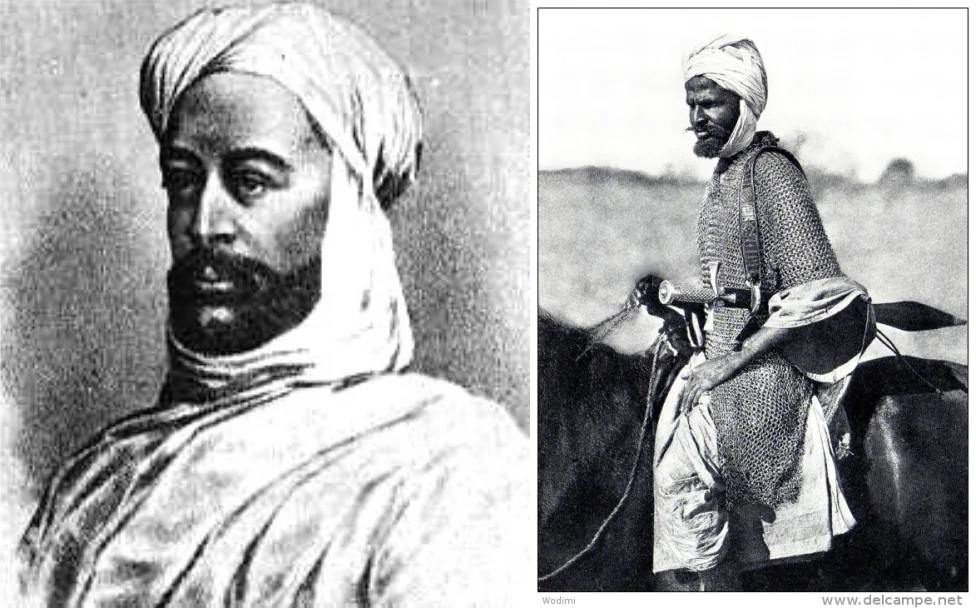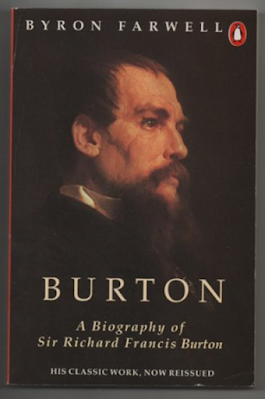Last week I mentioned I had found
an Afghan Force for TMWWBK. I must have
bought it when the Rules came out. The
contents are interesting, eclectic even.
You see them below. Above mounted Jezails from Irregular. The officer is a Hadji with the tell tale dyed red beard.
I'm aiming for the requisite 24 points. There are a couple of period paintings too that you may find interesting.
A “Company” of Afghan Army Regulars.
I’ve given them red coats. British Army surplus was popular and redcoats especially
so. As you see the uniform is limited to coat and hat. This was not unusual. The figures are from Irregular
Miniatures. Note they have the tell tale square Regular bases.
The unit cost 5 points, as they have Obsolete Rifles. Actually, I'm not sure that they used Obsolete Rifles. I am sure that the Regular Infantry style of fighting was not part of Afghan military culture. Obsolete Rifles acts a cypher reflecting that they are doing something new.
All the same they can form Close Order and Volley. A good reason to add another "Company". I've given these lads Blue facings by way of variety. The Afghan Regulars seem to have reserved their red coats for parades and fighting. While in Barracks or on the march they wore every day clothes.
A gun and crew, Afghan
Regulars and from Irregular. I really like these fellows. Cost 6 points or 4 if you want some tribal warriors.
Irregular Infantry (mounted). The typical Afghan Jezailchi, mobile Sharp
Shooters. I looked up period paintings to get the look right on these lads. An expensive unit at 8 points.
That's it for 24 points. A challenging opponent I think.
For a more traditional Afghan Field Force consider this. A unit of 16 Fierce Ghazis would cost 4 points. A less motivated unit of Tribal Warriors would cost 3 points. They are still pretty tough and there are a lot of them at 16 figures a unit.
I can do both with a mixture of Minifigs and Irregular. They will need painting of course.
That's it and to keep to the required 24 points we have to reduce quality. All the same as a Field Force it has some interesting points. Not too bad for fire power and with a powerful attack ability.
By way of general interest. I read recently that the trousers issued to the Afghan
Regular Infantry were very short in the leg. So short that straps had to be
sewn on (presumably the strap went under the foot) to drag them down to
maximise length. I don’t doubt the veracity of this. It is eye witness testimony with more than one witness. A bit of a puzzle to be sure.
What to make of it?
Afghan trouser style was full and long. These clearly were not. Were they part of the British Army surplus
purchase? A job lot in effect. If so had the “Bantam” effect already kicked in
for the poor of British Society?
If you are not familiar with the issue here are two salient
points that may help.
Post the Boer War a Government inquiry took place into the physical
condition of the British poor. That is where the bulk of soldiers came from. Their
often stunted size was found to be the result of poor nutrition. This had military implications.
A decade or so later
in 1914 the British Army was recruiting “Bantam” regiments average size of
recruit 5ft. The Bantam is a fierce little chicken.
I’ve read that earlier in the C19th the British poor
were shrinking in size but have never made the possible
Afghan connection before.
There is another possibility, these could have been Sepoy uniform trousers. Pre 1857 the Indians enlisting as Sepoys were mostly fine physical specimens. Well fed since childhood. They belonged to families whose hereditary profession was soldiering.
Post 1857 that changed. Although the recruitment of Sikhs helped compensate. Tall fellows. Though with skinny legs according to British Diaries. So that doesn't help.
Or was the trouser length just another example of the relentless and epoch defying march of crooked Army Contractors? I don't know.
Beja galore next time.
it is timely to wish you a Very Merry Christmas and a Happy New Year!




















































